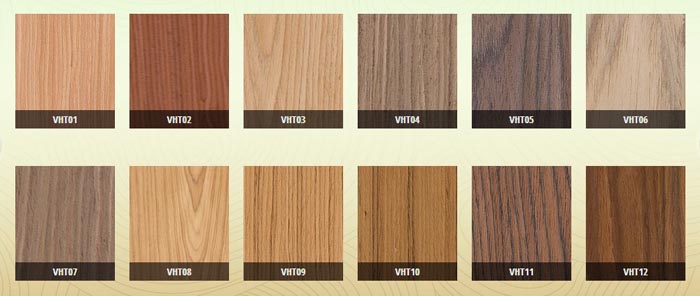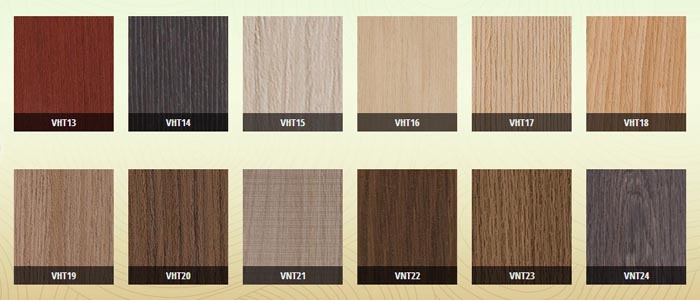What is Veneer Wood?
Veneer is natural wood, but it is thin from natural wood, veneer wood is only 1 to 2 glasses thick, a natural wood if thin The wood is very veneer. If the tree is 300mm thick and 200mm wide by 2500mm long, it will swarm around 1500 - 3000m2 of veneer wood, depending on the type of loss. After being stripped, veneer is glued to various types of industrial wood such as Plywood, Plywood, to make furniture. Due to the nature of the wood, the surface of veneer is no different from natural wood.

Advantages of Veneer Wood:
Affordable price, a natural wood when it comes out into veneer wood can produce a lot of furniture, wardrobe, kitchen cabinets ... veneer wood against warping, termite and bright surface (due to wood can be grafted, can be paired, decorated, crossed, horizontal, vertical, reversed, can run only sink, depending on type ... still retain its beauty and modern. If using wooden joists stick (board to call) to create length, wide. The veneer wood turns completely natural wood and is very durable, sure, beautiful and cheap price.
Disadvantages of wood veneer:
Because the wood is industrial wood, the veneer is not water resistant, it is easy to break, if moving much when finished product is damaged or cracked, so wood veneer is more user but must In places where there is no water all year round, and less moving. In modern countries such as Europe, the Americas, or some modern Asian countries, the use of veneer wood for interior furnishing has taken place 30-40 years ago, when they became aware of the forest. On depletion day, they found that veneer had many outstanding advantages but saved their habitat, saved the landslide and warmed up the earth so they switched to using so much, so why are we? Do not follow them, we should not ruin our living environment.



ỨNG DỤNG GỖ VENEER
